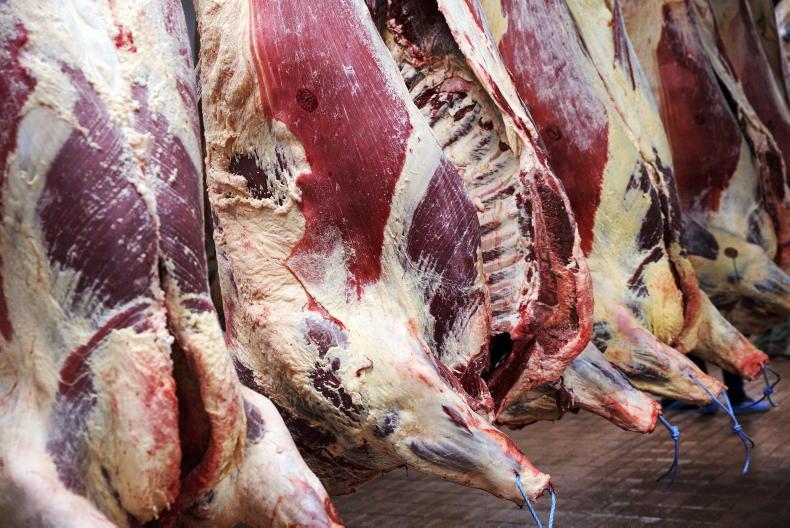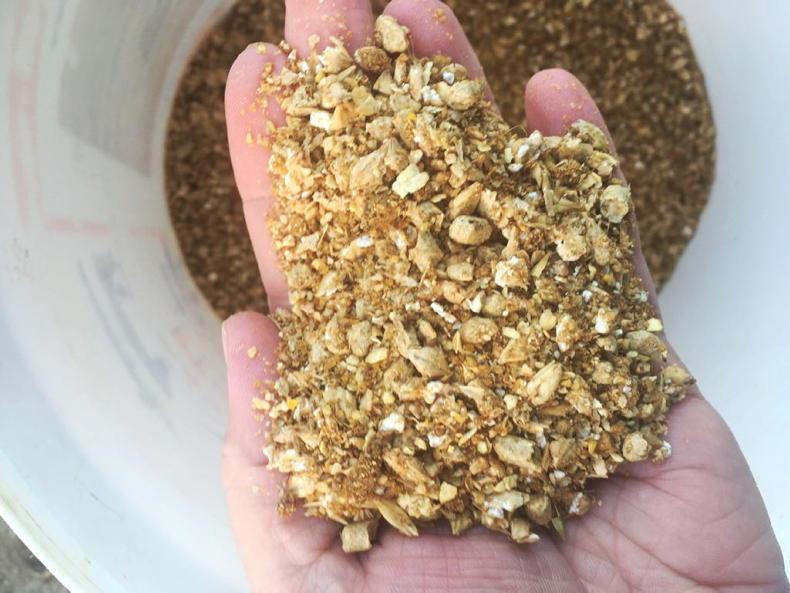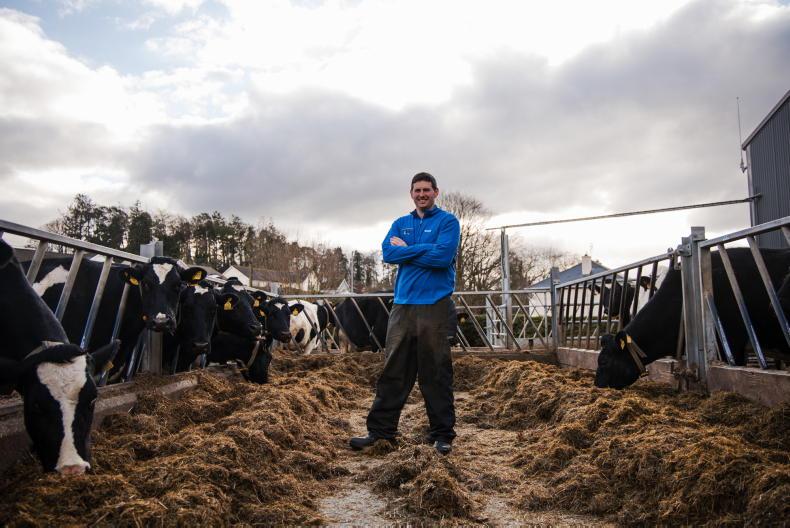Finishing cattle off grass is still common practice on many farms across the country.
This is especially true with the growth of dairy calf-to-beef systems in recent years.
Where farmers are planning to finish animals off grass later this year, outlined are a few things to keep in mind.
1. Do the sums stack up on grass finishing?
Before committing to feeding meals all summer, take the time to work out if a margin can be made from grass finishing.
Keep in mind that beef price usually comes under pressure in early autumn just as the flush of grass-finished animals come on to the market.
When drawing up a finishing budget, start off with the current weight of cattle and what they are potentially worth if sold live now.
Work out meal costs based on the price of a finishing ration, how many kilos will be fed per head every day and how long you intend feeding meal.
Will grass need another one or two dressings of fertiliser before autumn? Again, tally up the cost of fertiliser across the group.
Finally, what weight are cattle likely to gain from now until they are slaughter fit and what type of carcase weight can you expect.
Add in a margin for your time, then tally up all the inputs and add to the start value of cattle to get a breakeven cost.
Dividing this figure by the estimated carcase weight will give an idea on breakeven beef price per kilo, highlighting whether or not there is a chance of making a profit from grass finishing.
Be realistic about the cost of inputs, amount of meal fed and weight gain achieved. Using inflated and unrealistic figures will only cheat yourself.
2. Selecting cattle to finish off grass
When finishing off grass, feeding high levels of meal for longer than 50 days is not economic with steers and heifers. Not only are you substituting grass for meal, feed efficiency will decline.
As such, weigh cattle now and select animals within 60kg from the target slaughter weight if finishing in late summer. Lighter cattle can be reassessed in early August for finishing in late autumn.
3. Separate out finishing cattle for priority grazing and feeding
Once cattle for grass finishing have been selected, separate from lighter stores and give these animals priority for good-quality grass.
Don’t run finishing cattle alongside lighter stores, as competition for grass will see higher levels of meal feeding required to maintain weight gain.
Once separated, meal feeding can be targeted to finishing cattle only.
4. Parasite control
Where necessary, treat finishing cattle for internal parasites so they make best use of grass and concentrate feed.
5. Feeding meal
It will be possible to finish some early maturing, beef-sired heifers from a diet of high-quality grass in early August.
But the majority of animals will need meal feeding to reach a suitable fat cover, especially as summer transitions into autumn and grass quality declines.
When finishing cattle, energy is key. There will be adequate protein in grass, so choose a ration with a high cereal content and limit protein levels to around 12% to 13%.
On good-quality grass, feeding 2kg to 3kg/head over a 40-day period should be adequate for heifers with traditional beef breeding, rising to 50 days for continental types. Increase by 1kg on average-quality grass.
For steers, start with 3kg/day and cap at 4kg/day for native breeds, rising to 5kg/day for continental types.
Limit meal feeding to 50 days and when offering over 3kg/day, split the ration over a morning and evening feed.
Read more
Back to basics at BEEF 2024
Claas unwraps new beefed up combi baler
Finishing cattle off grass is still common practice on many farms across the country.
This is especially true with the growth of dairy calf-to-beef systems in recent years.
Where farmers are planning to finish animals off grass later this year, outlined are a few things to keep in mind.
1. Do the sums stack up on grass finishing?
Before committing to feeding meals all summer, take the time to work out if a margin can be made from grass finishing.
Keep in mind that beef price usually comes under pressure in early autumn just as the flush of grass-finished animals come on to the market.
When drawing up a finishing budget, start off with the current weight of cattle and what they are potentially worth if sold live now.
Work out meal costs based on the price of a finishing ration, how many kilos will be fed per head every day and how long you intend feeding meal.
Will grass need another one or two dressings of fertiliser before autumn? Again, tally up the cost of fertiliser across the group.
Finally, what weight are cattle likely to gain from now until they are slaughter fit and what type of carcase weight can you expect.
Add in a margin for your time, then tally up all the inputs and add to the start value of cattle to get a breakeven cost.
Dividing this figure by the estimated carcase weight will give an idea on breakeven beef price per kilo, highlighting whether or not there is a chance of making a profit from grass finishing.
Be realistic about the cost of inputs, amount of meal fed and weight gain achieved. Using inflated and unrealistic figures will only cheat yourself.
2. Selecting cattle to finish off grass
When finishing off grass, feeding high levels of meal for longer than 50 days is not economic with steers and heifers. Not only are you substituting grass for meal, feed efficiency will decline.
As such, weigh cattle now and select animals within 60kg from the target slaughter weight if finishing in late summer. Lighter cattle can be reassessed in early August for finishing in late autumn.
3. Separate out finishing cattle for priority grazing and feeding
Once cattle for grass finishing have been selected, separate from lighter stores and give these animals priority for good-quality grass.
Don’t run finishing cattle alongside lighter stores, as competition for grass will see higher levels of meal feeding required to maintain weight gain.
Once separated, meal feeding can be targeted to finishing cattle only.
4. Parasite control
Where necessary, treat finishing cattle for internal parasites so they make best use of grass and concentrate feed.
5. Feeding meal
It will be possible to finish some early maturing, beef-sired heifers from a diet of high-quality grass in early August.
But the majority of animals will need meal feeding to reach a suitable fat cover, especially as summer transitions into autumn and grass quality declines.
When finishing cattle, energy is key. There will be adequate protein in grass, so choose a ration with a high cereal content and limit protein levels to around 12% to 13%.
On good-quality grass, feeding 2kg to 3kg/head over a 40-day period should be adequate for heifers with traditional beef breeding, rising to 50 days for continental types. Increase by 1kg on average-quality grass.
For steers, start with 3kg/day and cap at 4kg/day for native breeds, rising to 5kg/day for continental types.
Limit meal feeding to 50 days and when offering over 3kg/day, split the ration over a morning and evening feed.
Read more
Back to basics at BEEF 2024
Claas unwraps new beefed up combi baler










SHARING OPTIONS